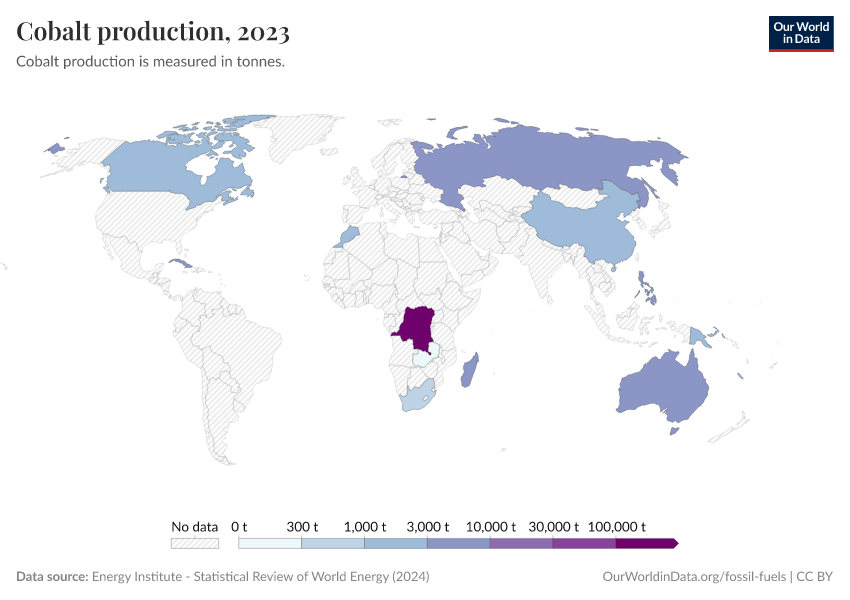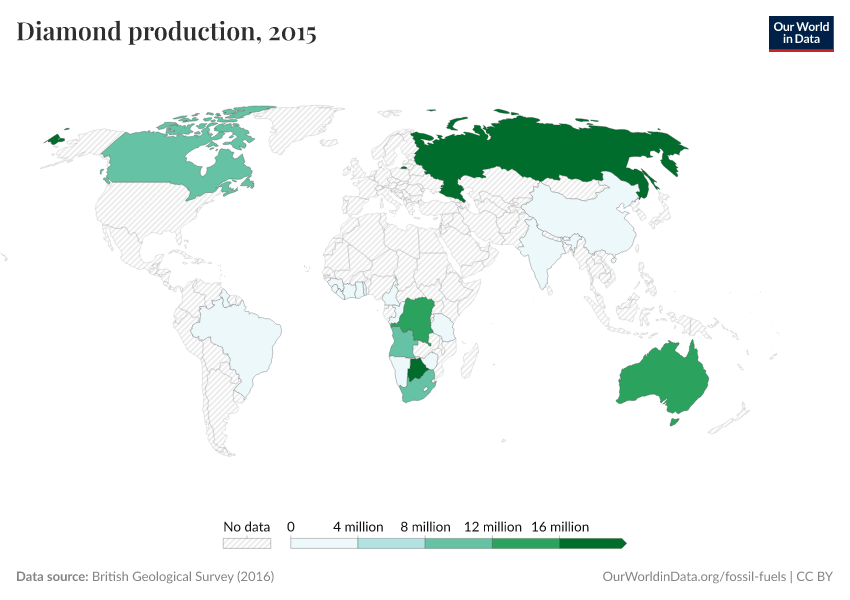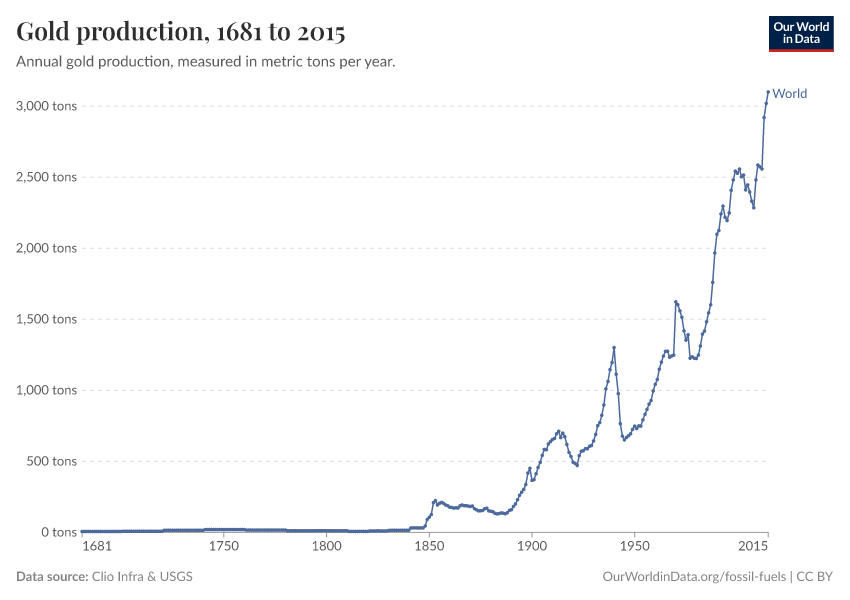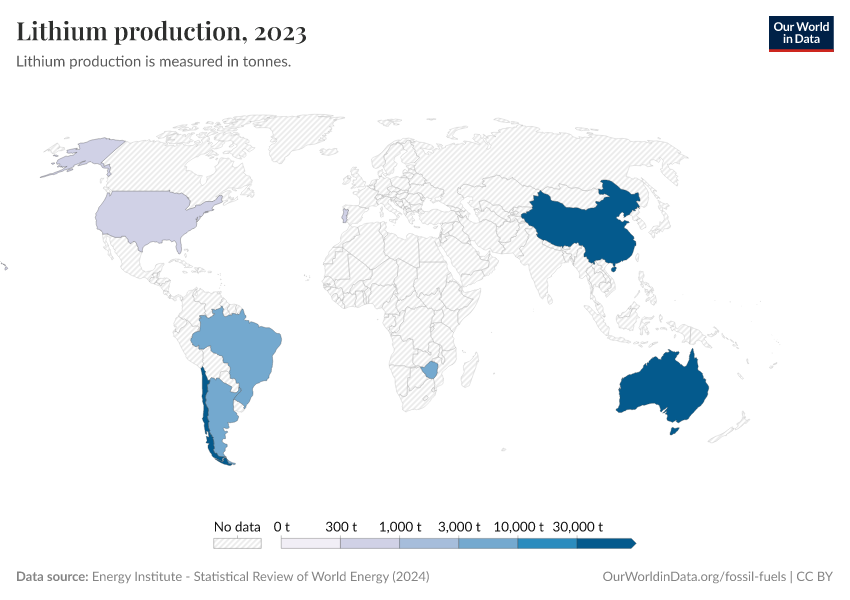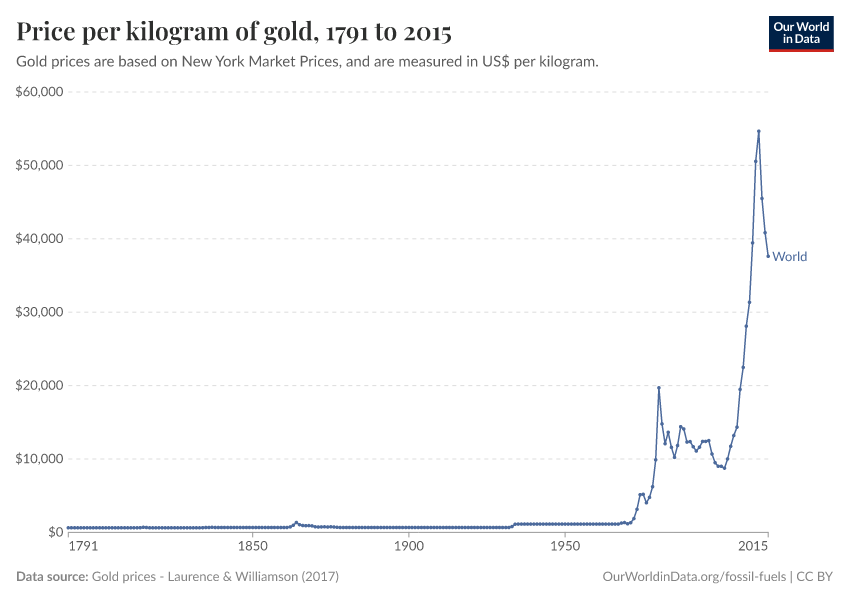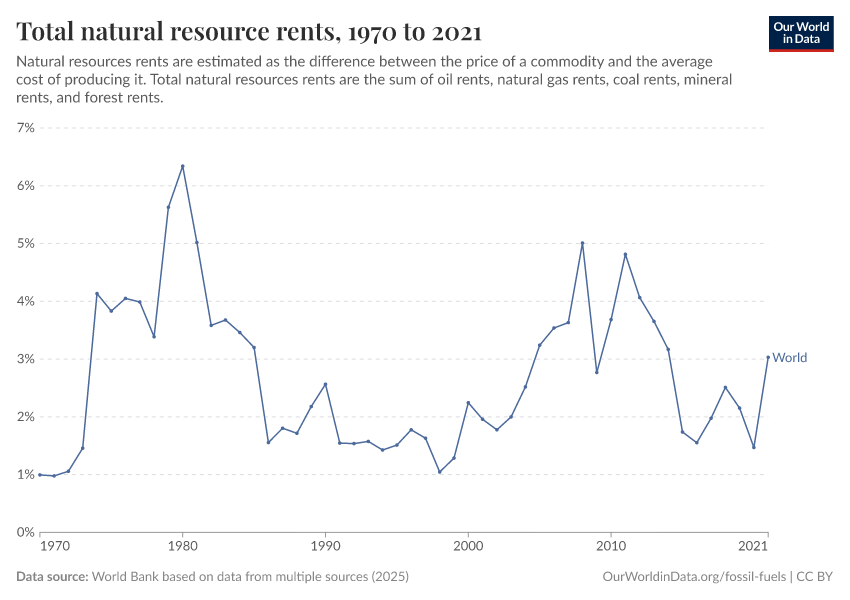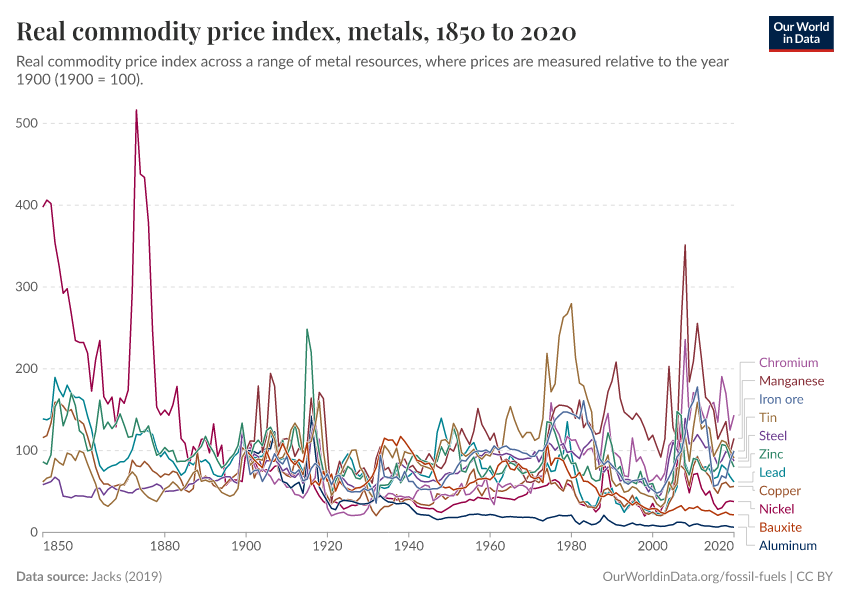Metals and Minerals
Which countries produce the world’s critical minerals? How is production changing over time?
Metals and minerals have played a crucial role in building the modern world. These materials are essential in construction and manufacturing, from buildings and bridges to cars and electronics.
Critical minerals like lithium, copper, and cobalt will play an increasingly important role in the energy transition as countries move away from fossil fuels towards clean energy.
This raises important questions about whether the world has enough of these minerals to power the energy transition, the environmental impacts of mining, and socioeconomic issues such as working conditions in supply chains.
On this page, you find our data, charts, and writing related to metals and minerals. It gives an overview of global statistics on crucial minerals: which countries have these resources, where they are mined and refined, and how they’re traded across the world.
Research & Writing
Low-carbon technologies need far less mining than fossil fuels
Mining for coal is much more resource-intensive than renewables or nuclear power.
Which countries have the critical minerals needed for the energy transition?
An overview of the distribution of critical minerals for clean energy.
What’s the difference between mineral reserves and resources?
Every reserve is a resource, but not every resource is a reserve.
Related work on minerals and energy
Key Charts on Metals & Minerals
See all charts on this topicCite this work
Our articles and data visualizations rely on work from many different people and organizations. When citing this topic page, please also cite the underlying data sources. This topic page can be cited as:
Hannah Ritchie and Pablo Rosado (2024) - “Metals and Minerals” Published online at OurWorldinData.org. Retrieved from: 'https://ourworldindata.org/metals-minerals' [Online Resource]BibTeX citation
@article{owid-metals-minerals,
author = {Hannah Ritchie and Pablo Rosado},
title = {Metals and Minerals},
journal = {Our World in Data},
year = {2024},
note = {https://ourworldindata.org/metals-minerals}
}Reuse this work freely
All visualizations, data, and code produced by Our World in Data are completely open access under the Creative Commons BY license. You have the permission to use, distribute, and reproduce these in any medium, provided the source and authors are credited.
The data produced by third parties and made available by Our World in Data is subject to the license terms from the original third-party authors. We will always indicate the original source of the data in our documentation, so you should always check the license of any such third-party data before use and redistribution.
All of our charts can be embedded in any site.



